Families First Act: What it Means for Employees and Employers

The Families First Coronavirus Response Act (FFCRA) was signed into law on March 18, 2020 to mitigate the negative ramifications of the COVID-19 pandemic. The main purpose of the act is to require paid time off to employees impacted in certain ways by COVID-19. The provisions of the act will apply from April 1 through December 31, 2020.
These regulations apply to certain public employers but, more importantly, to private employers with fewer than 500 employees. Small businesses with fewer than 50 employees may qualify for exemption from the requirement to provide leave due to school closings or child care unavailability if the leave requirements would jeopardize the viability of the business as a going concern.
The basic provisions of the FFCRA call for:
- Two weeks (up to 80 hours) of paid sick leave at the employee’s regular rate of pay when the employee is unable to work because the employee is quarantined and/or experiencing COVID-19 symptoms and seeking a medical diagnosis; or
- Two weeks (up to 80 hours) of paid sick leave at two-thirds the employee’s regular rate of pay because the employee is unable to work because of the need to care for an individual subject to quarantine or to care for a child (under 18 years of age) whose school or child care provider is closed or unavailable for reasons related to COVID-19, and/or the employee is experiencing a substantially similar condition; and
- Up to an additional 10 weeks of paid expanded family and medical leave at two-thirds the employee’s regular rate of pay where an employee, who has been employed for at least 30 calendar days, is unable to work due to the need for leave to care for a child whose school or child care provider is closed or unavailable for reasons related to COVID-19.
An employee qualifies for paid sick time if the employee is unable to work (or unable to telework) due to a need for leave because the employee:
- is subject to a Federal, State, or local quarantine or isolation order related to COVID-19;
- has been advised by a health care provider to self-quarantine related to COVID-19;
- is experiencing COVID-19 symptoms and is seeking a medical diagnosis;
- is caring for an individual subject to an order described in (1) or self-quarantine as described in (2);
- is caring for a child whose school or place of care is closed (or child care provider is unavailable) for reasons related to COVID-19; or
- is experiencing any other substantially-similar condition.
An employee qualifies for expanded family leave if the employee is caring for a child whose school or place of care is closed (or childcare provider is unavailable) for reasons related to COVID-19.
The regulations published on April 1, 2020 indicate that if employees cannot work because their employers are subject to a government shutdown order or they are ordered to shelter at home, the employees will not qualify for the emergency paid leave or the expanded family and medical leave under the FFCRA. However, these employees will be eligible for unemployment benefits.
The duration of the leave depends on why the employee has requested leave.
- For reasons (1)-(4) and (6): A full-time employee is eligible for 80 hours of leave, and a part-time employee is eligible for the number of hours of leave that the employee works on average over a two-week period.
- For reason (5): A full-time employee is eligible for up to 12 weeks of leave (two weeks of paid sick leave followed by up to 10 weeks of paid expanded family & medical leave) at 40 hours a week, and a part-time employee is eligible for leave for the number of hours that the employee is normally scheduled to work over that period.
Pay is calculated differently depending on the reason for the requested leave.
- For leave reasons (1), (2), or (3): employees taking leave are entitled to pay at either their regular rate or the applicable minimum wage, whichever is higher, up to $511 per day and $5,110 in the aggregate (over a 2-week period).
- For leave reasons (4) or (6): employees taking leave are entitled to pay at 2/3 their regular rate or 2/3 the applicable minimum wage, whichever is higher, up to $200 per day and $2,000 in the aggregate (over a 2-week period).
- For leave reason (5): employees taking leave are entitled to pay at 2/3 their regular rate or 2/3 the applicable minimum wage, whichever is higher, up to $200 per day and $12,000 in the aggregate (over a 12-week period).
Covered employers qualify for dollar-for-dollar reimbursement through tax credits for all qualifying wages paid under the FFCRA up to the appropriate per diem and aggregate payment caps. Applicable tax credits also extend to amounts paid or incurred to maintain health insurance coverage.
Employers must post a Notice in their workplace. If they are working remotely, they may email it. A copy of the notice is located here.
More information is available at the Department of Labor website.
If you have questions about the Families First Act, please contact a member of your JDJ team and we will be glad to assist you.



















